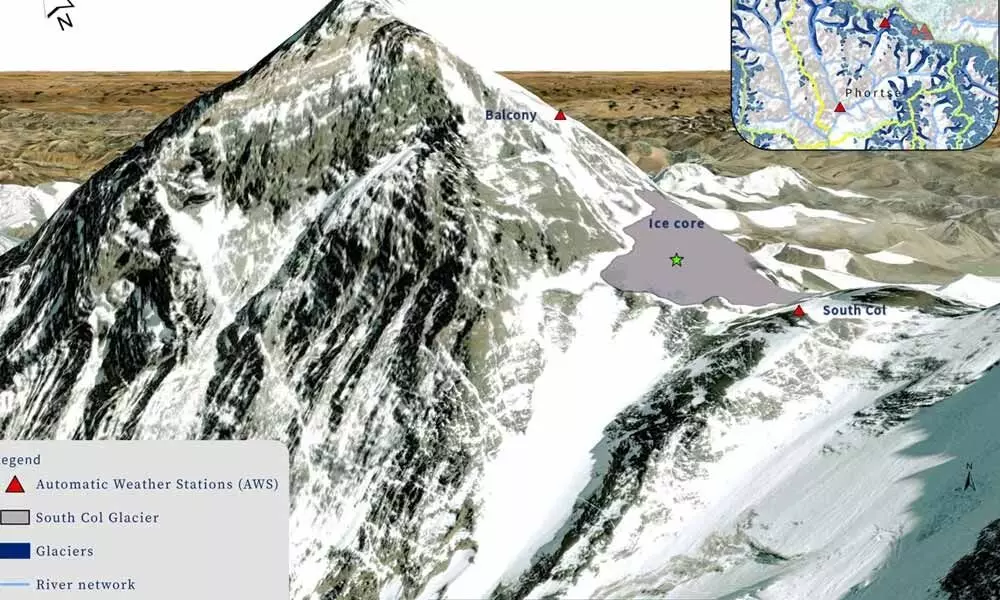Everest glaciers losing ice, thinning at alarming rate: Study

Everest glaciers losing ice, thinning at alarming rate: Study
With estimated thinning rates of nearly two metre per year, glaciers on the Mount Everest such as South Col Glacier, which is located at the highest point in the world, the ice on Mount Everest has been thinning at an alarming rate, a latest study has found.
With estimated thinning rates of nearly two metre per year, glaciers on the Mount Everest such as South Col Glacier, which is located at the highest point in the world, the ice on Mount Everest has been thinning at an alarming rate, a latest study has found.
This study addresses a key question from the 2019 National Geographic and Rolex Perpetual Planet Everest Expedition on whether glaciers at the highest point on earth are experiencing the impacts of climate change.
The Mount Everest region has indeed been losing ice significantly since the late 1990s, it was revealed in an article published in the Nature Portfolio journal 'Climate and Atmospheric Research'.
This is significant in view of the fact that earlier studies concentrated on glaciers at lower heights and those studied from the higher altitude were done with the help of satellite images. Himalayas are called the third pole as it is the repository of highest volume of ice outside the two poles. The Everest Expedition, the single most comprehensive scientific expedition to Everest, conducted trailblazing research on glaciers and the alpine environment. The multidisciplinary team comprised scientists from eight countries, including 17 Nepali researchers. Three of the co-authors of this study were from the International Centre for Integrated Mountain Development (ICIMOD).
Based in Kathmandu, Nepal, ICIMOD is a regional intergovernmental learning and knowledge sharing centre for Afghanistan, Bangladesh, Bhutan, China, India, Myanmar, Nepal, and Pakistan.
The findings are based on data from a 10-metre-long ice core obtained from South Col Glacier at an elevation of 8,020 metres above sea level (masl), as well as meteorological observations from the two highest automatic weather stations in the world located on the southern slopes of Mount Everest at 7,945 masl and 8,430 masl. South Col Glacier lies on the main climbing route of Mount Everest on its southern ridges. At a mean elevation of 7,985 masl, this relatively small glacier is undoubtedly the highest glacier in the world. The surface of the glacier is mainly bare ice, apart from seasonal snow and a perennial snow apron along the sides of Mount Everest, which comprise the upper reaches of this southerly oriented glacier.















